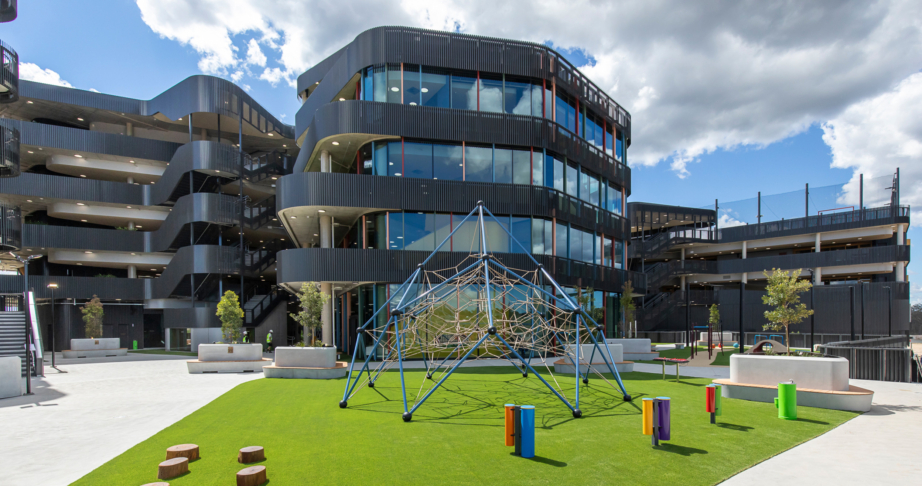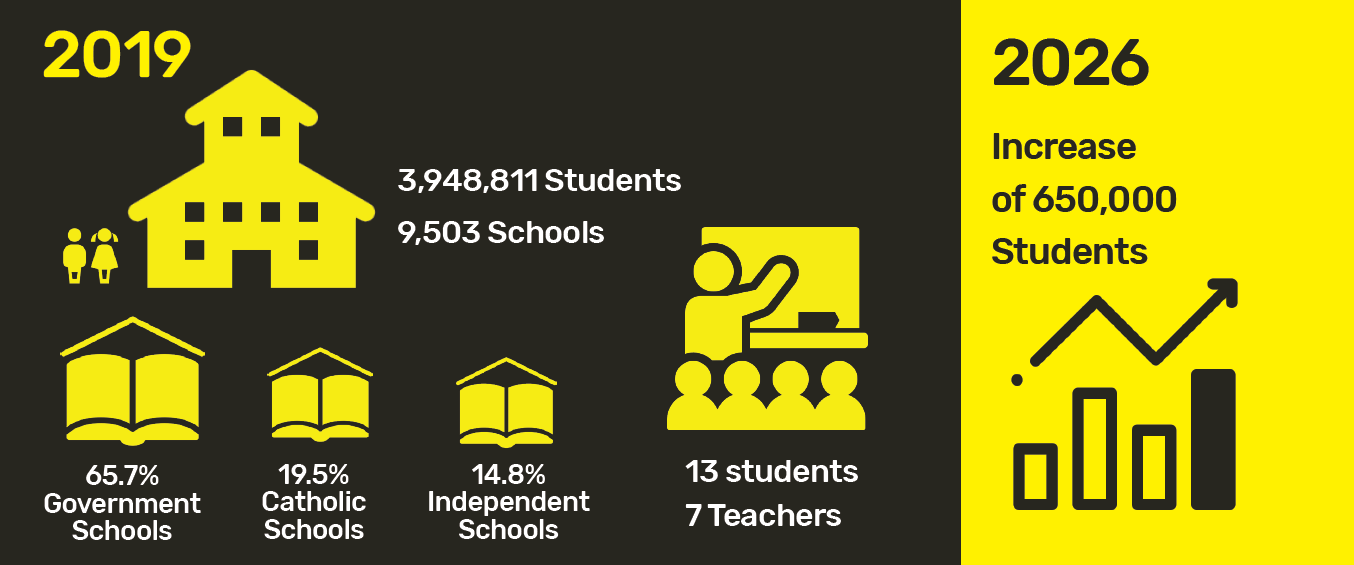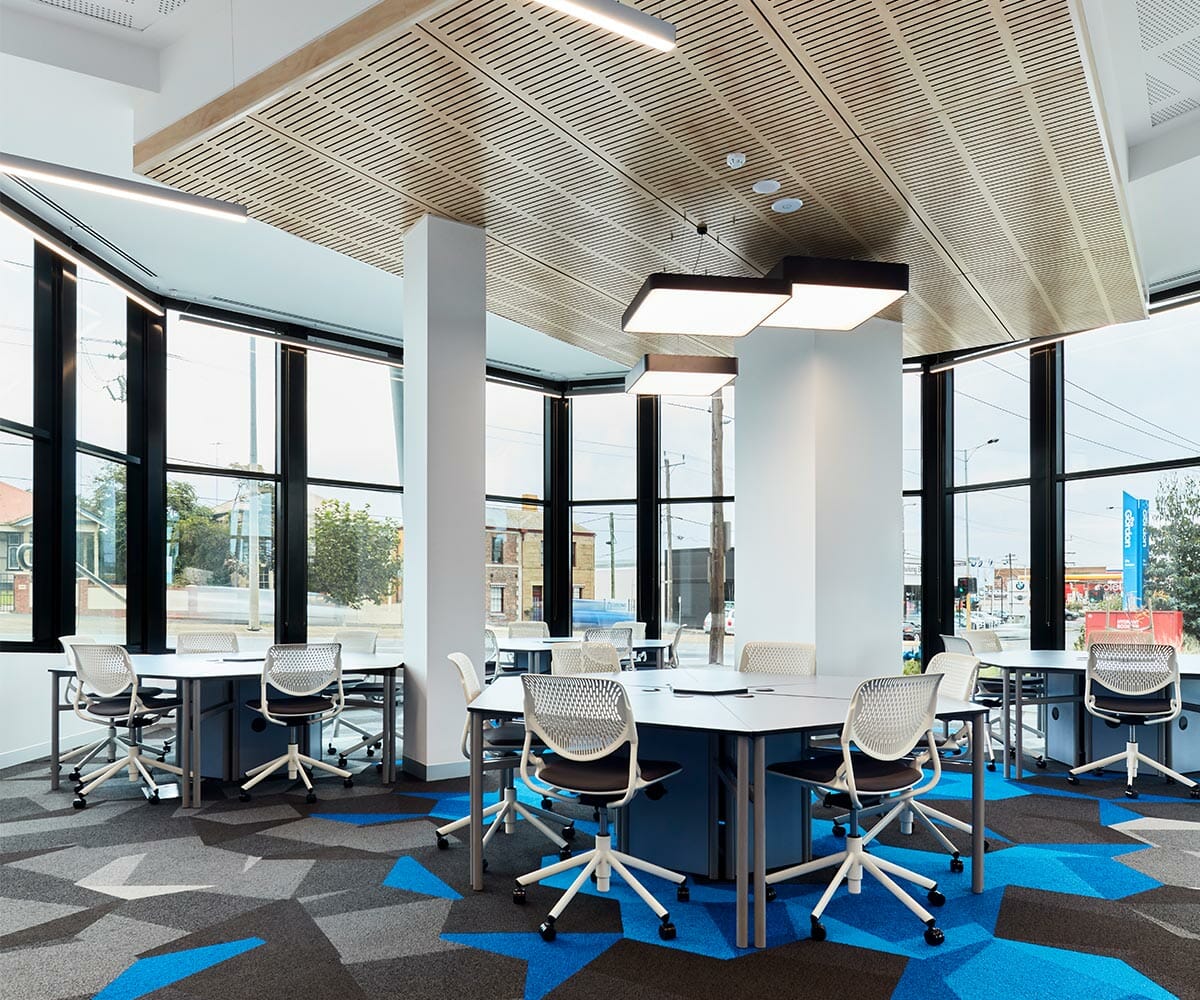
2 March 2021
Lessons from Building Vertical Schools
Vertical schools are a recent phenomenon in Australian state education. High land prices and a scarcity of suitable sites make vertical schools an economic alternative to our longstanding cultural preference for low-rise schools.
New vertical schools, ranging in height from four to seventeen storeys, are now starting to be commissioned across all Australian mainland states. Peter Goss from the Grattan Institute wrote that Australia can anticipate an increase of around 650,000 students in the decade to 2026. This number would require the construction of seven new twenty-five-student classrooms every day for ten years.
To download our white paper on vertical schools fill in the form below.
The six-storey South Melbourne Primary School, opened in 2018 and caters to 525 students. Within the high-rise structure of Arthur Phillip High School by Grimshaw Architects with BVN, students will be divided into multi-year communities. A vertical layout, as at Adelaide Botanic High School, provides opportunities for collaboration and connections that are not available in traditional low-rise school buildings.
Vertical schools have been around for some time, examples of multistorey primary schools in the UK include an 1870s five-storey Manchester school and a seven-storey Hackney school from 1898 however, design and development considerations in an Australian context are relatively new.
Maximising the investment is all in the planning, and you can’t just re-stack a horizontal school, you need to re-think the entire approach. In the past, people thought of vertical schools purely as a solution to space constraints where schools simply didn’t have the necessary horizontal space for expansion, therefore were required to build upwards.

Going vertically for educational buildings should be more cost-effective than a big sprawled outbuilding. At heart, it is a school, but it is considered a commercial building first. Vertical schools need to be considered around the parameters of how we can measure success over the long term. For example, rather than stacking an entire school, there is an alternative possibility of bringing 11 single-year schools together, all stacked vertically.
If we look at Parramatta, the local schools are located right in the world’s leading consulting firms. Usually, the schools would not have the opportunity to engage with those groups; however, this approach became a successful opportunity for collaboration between the schools and companies, which became a benchmark for schools’ future development.
This situation develops a coaching model, which is moving quite fast across the education community. COVID-19 has shown that schools need to move more quickly to keep up with changing times. Commonly, schools focus solely on the collection of kids and teachers having interactions; however, at times, they fail to realise that globally there are external people who can be accessed.
We have seen that teachers are now using technology to connect more with others outside because they have the time, which may establish a change in attitude and behaviours. Provided that the internet access is fast, we should be saying, why don’t we change the opening hours of schools and
who they interact with?
Schools need to think about becoming more of a grouping of people with a common purpose that collectively feeds into the community around them. This makes schools more of a transitional element, rather than the attitude of “use my space”. Working from home has contributed to most companies beginning to realise the potential of allowing employees to work far more flexibly. Therefore the idea of “keeping people in one place” is going to change. Some of these commercial organisations should be thinking, “why do I need to lease that space” when there is a valuable opportunity for employees to work within educational spaces.
We have also seen many schools saying, “schools don’t need to be instructional,” and some research shows children learn better by discovery. By collecting people in the same place, there is a better opportunity for engagement and collaboration than online.
Simultaneously, it should be noted that this doesn’t need to be all the time. Some schools have changed their opening hours to “every other day,” showcasing the increasingly flexible approach to the future of education.
There is a growing number of these “every other day” models, which actively reduce the number of people within a classroom at a given time.
Current infrastructure is not coping with these emerging models of education. Other factors, such as autonomous vehicles and P2P transport, will also change things dramatically, but where we sit is education.
The thinking is not at that level yet. The world which we are preparing young people for has changed dramatically. Is this a blip or an indication that this is where and how things are going? And that possible, the transition is moving too slow, and our current education is not preparing people enough for the future yet.

Schools as Centres of Community Again.
We desperately need more schools; however, they are often considered an overhead. With a shift in perception, they can be viewed by people as the creation of wealth. Economically governments rarely look at schools as the creation of gross domestic product (GDP). If we can get governments
to start viewing schools in this way, then we can strive for better funding as ultimately,
smart and educated people create greater wealth, therefore putting schools at the creation of wealth level.
Health is at the prevention of a cessation, when people view the system in this way they change how they use budgetary resources. When people look at the education system, they also need to reevaluate how they value it, rather than attempting to spend as little as possible.
In QLD, there is no economic analysis in the business case. In NSW, all schools must run a cost-benefit analysis, and this can skew the outcomes. For example, spending $10m on a hall impacts the benefits, but spending on most classrooms creates a far greater outcome. Schools are generally
net producers; this is still a very theoretical debate and should boil down the GDP. The NPV of this investment is now significant, although this is still emerging and the complete analysis of the long-term value is a long way off.
Lessons learnt from Vertical Schools construction.
Vertical schools are not like horizontal schools. In certain aspects, they are more like hotels than they are schools. There are significant influxes of students at specific times of the day, and students move around simultaneously. So far, the big lesson learnt from global school construction is that we need to re-think the design phase of the project.
The first step of the design phase of a project is undertaking a planning stage. The planning stage is a crucial step in developing a project brief, which will be utilized as a basis for project initiation and engagement of consultants with the ability for it to be further developed during the design stage.
It is essential to have a straightforward process for developing and determining scope (areas, facilities, room data, etc.) with clear roles and responsibilities outlined to the region, planning, and user groups working with delivery and the project design team. A user group panel can provide valuable input and review throughout the design process. This can be achieved by holding regular working meetings to review, discuss, and approve scope while ensuring a planning representative and a dedicated person coordinating the user group input is part of these meetings.
In a situation where an education brief is used to inform the design or as a framework for the school, it needs to be rigorously developed and owned by stakeholders. These stakeholders should hold appropriate expertise, invest in its outcomes, and answer the design team and the school executive,
once appointed.
A clear framework, process and owner of the brief, while ensuring greater collaboration between EQ and ISB on the education brief – in recognition of the connection between the design principals and the pedagogical goals. This collaborative relationship would be beneficial in the wider area of project planning and design.


